|

August 2016
from
HiddenIncaTours Website
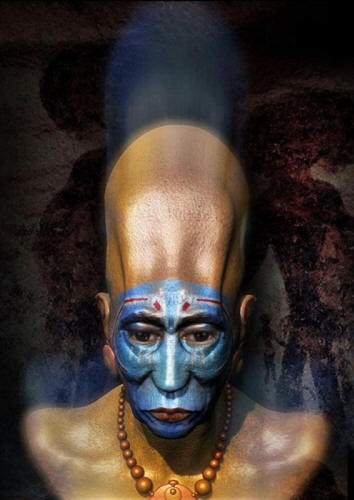
Part 1 of 4
The Baby
04 August 2016

The above display case at the Juan Navarro Museum
in Paracas Peru
shows three skulls from the ancient Paracas culture that were all
discovered in the same tomb approximately 4 years ago.
All appear to
be members of the same family and all are elongated
with reddish
hair.
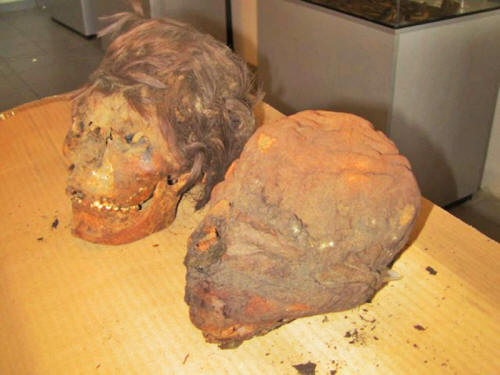
The skull on the right is an 18 to 22 month old baby in its original
funeral wrappings who died about 1950 years ago according to
radiocarbon testing, and the ornate nature of the textile indicates
that it was a member of a high status family.
The age at death was
declared by a Peruvian forensic dentist.
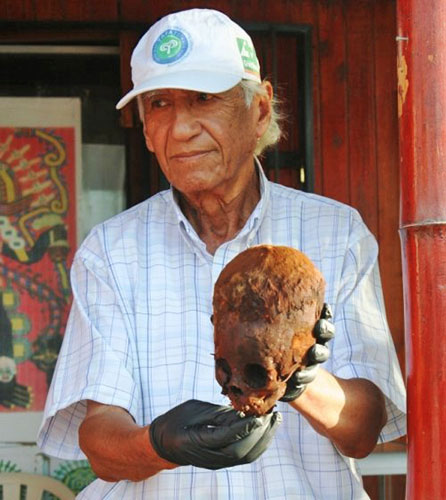
Here above Sr. Juan Navarro is shown displaying the baby skull once
it was unwrapped by an archaeologist, and a forensic team from the
US. DNA samples were taken during the unwrapping process.
Note the
reddish-blonde hair which is and was not a Native American
characteristic.
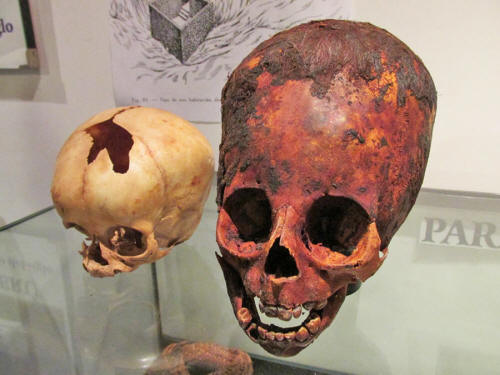
And above, the 'baby Paracas skull' on the right as compared to a
normal Native American baby skull on the left. The latter was likely
1 year to 16 months old at the time of death.
The Paracas skull is
profoundly different in shape and size…
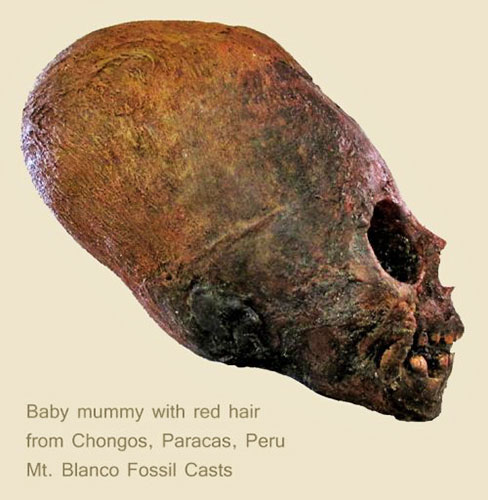
DNA testing of the baby Paracas was conducted in the Lakehead
University lab in Canada, as well as perhaps one or two other labs
in the United States. The results that came back showed only one
discernible
haplogroup present, that of
U2e1.
This haplogroup is not
associated with Native Americans, but WITH proto-Germanic and
proto-Balto-Slavic speakers!
Contamination has been ruled out.
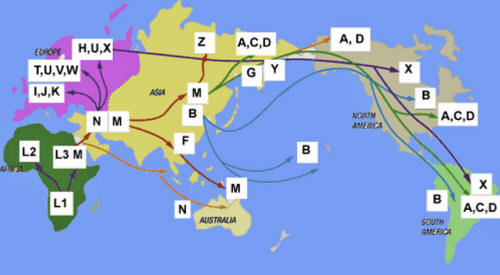
This would indicate that the Paracas ancestors that had the
haplogroup U2e1 haplogroup did not cross the Bering land bridge with
the Native Americans, but likely sailed to the coast of Peru from
Europe, the Middle East or possibly India, at least 3000 years ago.
The full DNA results and analysis can be found in the
video 'Watchers
10,' at end of this page.
Part 2 of 4
La Oroya
10 August 2016

In part 1 above, we learned that
the baby Paracas shown above to the right, who died 1950 years ago
was of haplogroup U2e1, which is found in proto-Germanic and
proto-Balto-Slavic peoples.
This means that those ancestors did not
walk across the Bering Land Bridge!
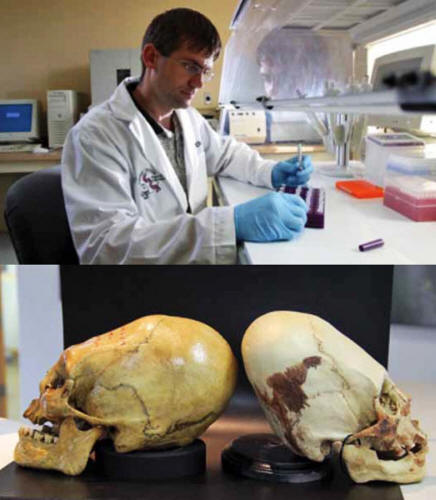
The second skull tested, the one on the left above is in a private
collection in the US, and was taken out of Peru by an American
physician, likely in the 1930s, prior to the Peru government banning
export of pre-Colombian materials.
It came from an area called
La Oroya, east of Lima, but its origins are unknown.
It is estimated to
have died 850 years ago according to radiocarbon tests.
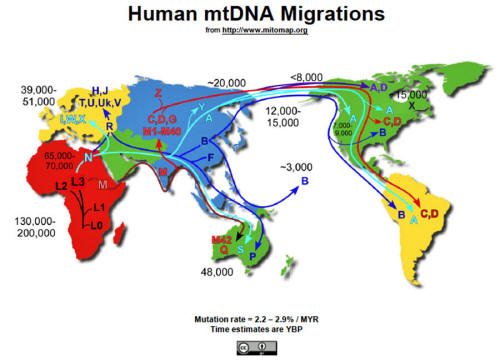
As the above map indicates, all people of Native American heritage
had ancestors of Haplogroups A, B, C, D and possibly X, while the
only haplogroup found in the La Oroya skull was
T2b, which is
European.
Like the baby, the La Oroya skull does not fit in with the
standard Native American migration model.
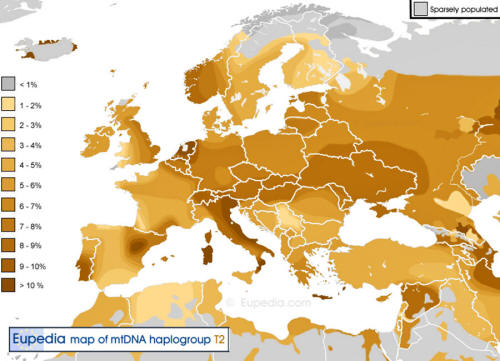
The broader T2 haplogroup is found only in Europeans and some Middle
Eastern areas, and NOT in Eastern Asia.
Thus, we now have DNA from 2
ancient Peruvian people whose ancestry, at least in part comes from
Europe, long
before the Spanish arrived in the 1500s AD.
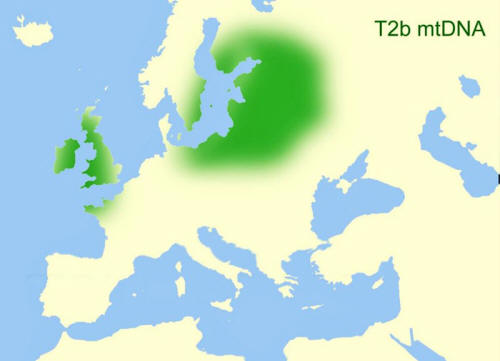
More specifically, T2b is found only in the British Isles area, the
Baltic states and parts of Scandinavia! Thus, the human migration
story of South America will have to be rewritten.
And there are 2
more DNA updates to come, with equally shocking results!
The full story about all 4 Peruvian elongated skulls can be
exclusively found in the video 'Watchers 10,' at
the end of this page.
Part 3 of 4
"Cleopatra of Paracas"
11 August 2016
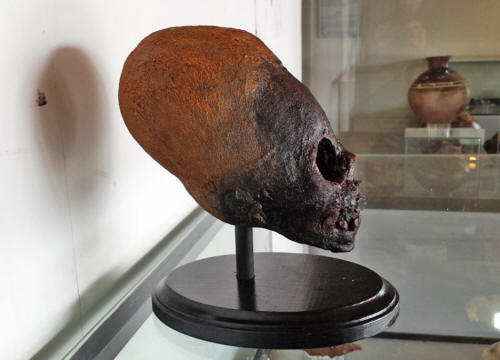
In Part 1 (far above) of the DNA results, we saw that the 18 to 22 month old Paracas royal baby, with obvious blonde/red hair had the maternal
haplogroup U2e1, which is only found in people of European descent,
and more specifically proto-Germanic and proto-Slavic speakers.
The
fact that radiocarbon tests indicated that the baby died 1950 years
ago on the coast of Peru is curious.

In part 2 (above), an 850 year old elongated skull (above
photo left) from the highlands east of Lima, not Paracas was tested
and the maternal haplogroup found was T2b, again a European
haplogroup most commonly found in the British Isles, Baltic states
and Scandinavia.
The first Europeans, as in the Spanish did not
reach Peru until 1532 AD…
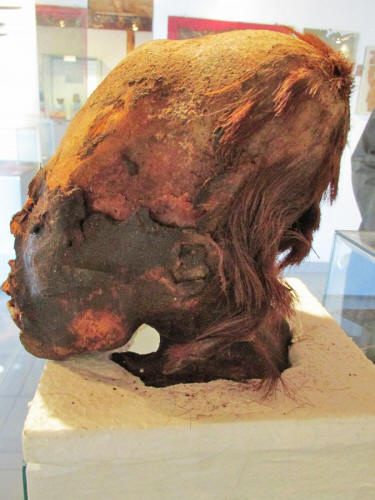
And here in part 3 we have the results of the skull seen above,
which is of the Paracas culture and is located in the Juan Navarro
Museum in Paracas. Sr. Juan named this "Cleopatra" because of the
graceful shape of the head, and do note the obvious red hair.
The
maternal DNA found from hair of this sample is H1, commonly found in
Western Europe, especially among
the Basque (27.8%) but also in
Iberia and perhaps north Africa.
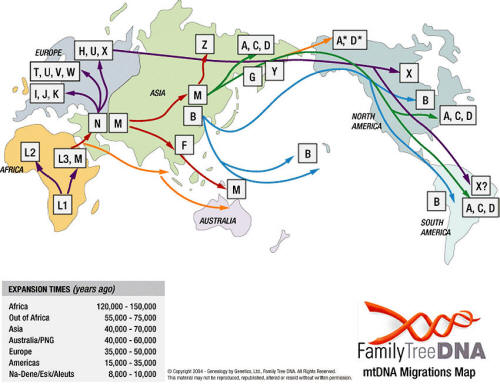
Again, all pre-Columbian people of the Americas are thought to have
been of the haplogroups A, B, C, D and perhaps X, and with three
results showing the presence of European ancestry, long before the
proposed arrival of said Europeans, especially as far south as Peru,
history must be re-written.
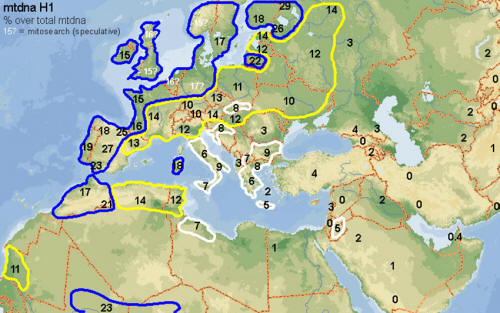
The above map shows the dispersal of
haplogroup H1, supposedly
today.
There are theories that H1 was the dominant haplogroup of the
European megalithic cultures from 5000 BC until the arrival and
domination by the proto-Celts about 2000 BC.
Is it possible that the
H1 megalithic builders managed to escape, by sea, and eventually
make it to Peru?
A more detailed account of the DNA results for 4 elongated skulls,
including those above can be seen in the video 'Watchers 10' (at
end of this page), along
with interviews with the geneticists at Lakehead University in
Canada.
Part 4 of 4
European Nobility?
12 August 2016
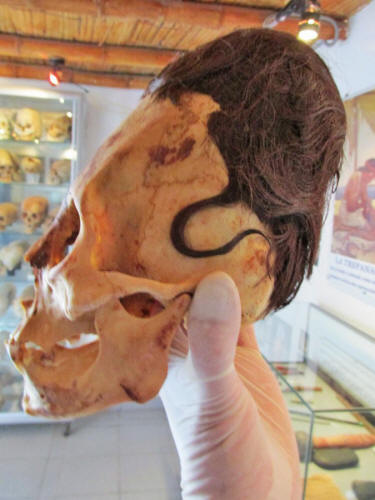
In the previous 3 DNA tests of Peruvian
elongated skulls, the only haplogroups that were found showed
European ancestry, and no Native American ancestry which is of
course very curious.
Those results can be seen for:

The skull in the above photo on the left and upper photo was found
in the same tomb as the baby (shown in the photo above still wrapped
in royal textile) and displayed haplogroup H2a, which is
characteristic of bloodlines from eastern Europe, some western
Europe but mainly the Caucasus area, as in Crimea.
Since it was
found in the same tomb he or she likely died about 2000 years ago.
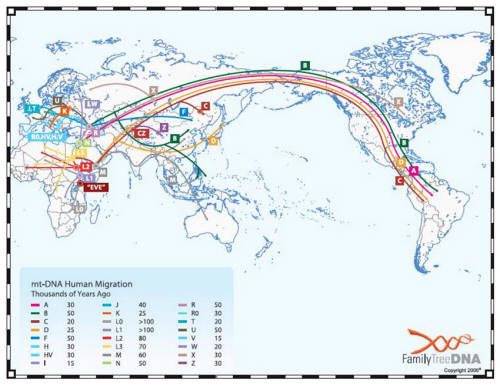
As the above map indicates, the only haplogroups believed to have
reached South America prior to the Spanish conquest of 1532 AD are
A, B, C and D… thus, we have indications from 4 different skulls
found in Peru that the above is not the full story.
There had to be
migrations from the Europe/Caucasus areas prior to that.
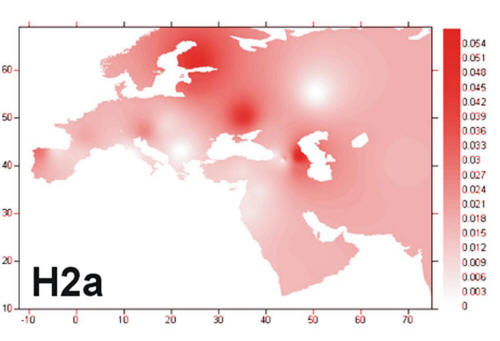
As the above map indicates, the major centers for those with
haplogroup H2a are the Caspian Sea, northern Black Sea and
Scandinavia, with the latter likely originating from the Caspian Sea
via the Black Sea.
Ancient elongated skulls, dating from about 2000
years ago have been found in,
-
France
-
Austria
-
Hungary
-
Germany
-
England,
...with their source likely being the Crimea area.
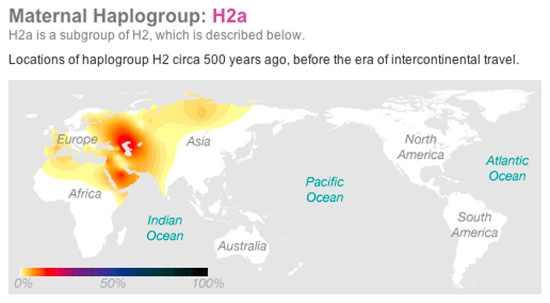
The parent Haplogroup of H2a is H2, which, seems to originate in the
Caspian Sea area, thus supporting an Armenia/Crimea connection.
It
is thus plausible that the ancestors of the skull with R2a haplogroup migrated to the coast of Peru, as in Paracas, via the
Indian Ocean and then Pacific Ocean between 2000 and 3000 years ago.
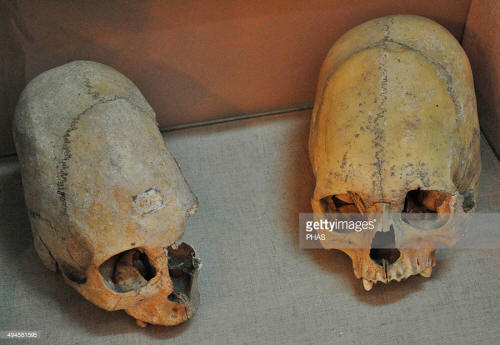
Sarmatians.
Two deformed human
skulls.
Probably dated in the
3rd century BC.
Kerch Historical and
Archaeological Museum.
Autonomous Republic
of Crimea. Ukraine.
The above two skulls are from a museum in Crimea, dated to about 300
BC.
They are quite similar in form to some of those found in Paracas.
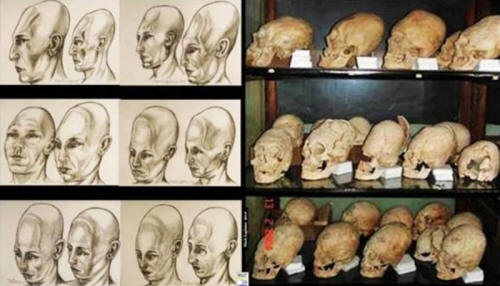
Many skulls of an elongated nature found in Romania, which is on the
western edge of the Black Sea, and also date from somewhere around
2000 years old.
Could they have migrated from Crimea and then spread
into Europe? The best source of data and photos of this area is via
Mark Laplume
here.
***
Video
Watchers 10
|























